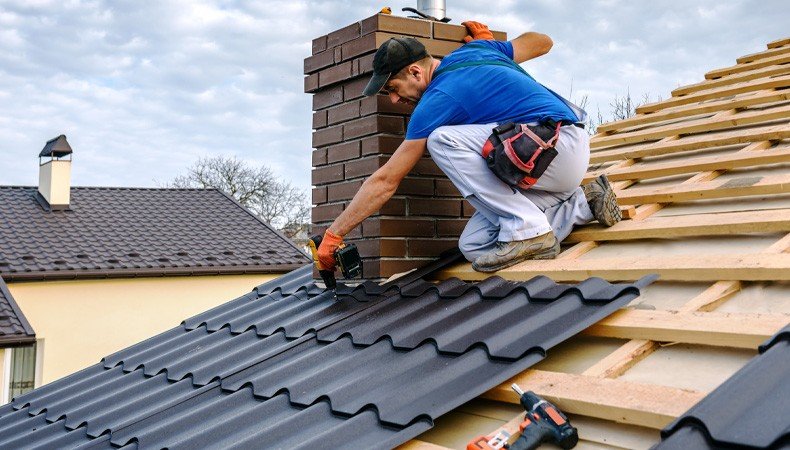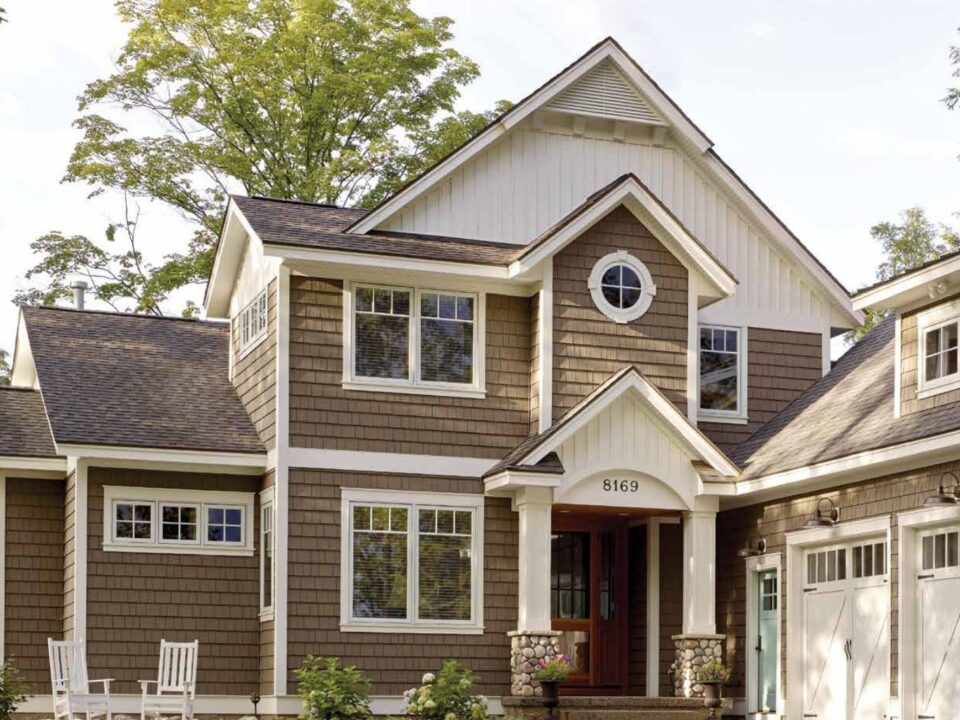
Cost of Roof Repair in Manhattan: A Complete Pricing Guide
August 4, 2025
How Much Does a Roof Replacement Cost in NYC?
August 20, 2025New York City’s architecture is as diverse as its people—from brownstones in Brooklyn, to high-rise flats in Manhattan, to pitched shingle roofs in Staten Island. While each borough has its own roofing style and challenges, one question unites them all: when is the right time for a roof replacement?
Your roof is more than shingles or membranes—it’s your property’s shield against wind, water, snow, and heat. Delay replacement too long, and you risk interior water damage, mold, and costly structural repairs. Replace too early, and you may spend thousands unnecessarily. This article walks you through lifespans, warning signs, borough-specific conditions, costs, and maintenance tips so you’ll know when the time for a roof replacement has truly come.
Typical Roof Lifespans in NYC
Roofing materials don’t last forever, and urban conditions shorten life expectancy.
-
Asphalt shingles (common in Staten Island, Bronx, parts of Queens): 20–25 years under ideal conditions, but high winds or poor ventilation may reduce lifespan to 15–20 years.
-
Flat roofs (Brooklyn, Manhattan, Queens): EPDM, TPO, or Modified Bitumen usually last 15–25 years, but standing water, foot traffic, and HVAC equipment often shorten performance.
-
Metal roofing (less common, some Queens & Brooklyn retrofits): 40–50 years if properly installed and maintained.
Key Insight: In NYC, environmental stress, building access limitations, and code requirements often mean roofs need replacing earlier than national averages.
Signs It’s Time for a Roof Replacement
Here are the clearest indicators that the time has arrived:
-
Persistent or Multiple Leaks – Especially when new leaks appear in different areas despite recent repairs.
-
Damaged or Missing Shingles – Curling, cupping, or widespread granule loss across the roof surface.
-
Flat Roof Issues – Ponding water lasting more than 48 hours, blistering membranes, or seam separations.
-
Structural Concerns – Sagging ridgelines, spongy decking, or visible daylight in attic spaces.
-
Mold and Mildew Growth – Especially in poorly ventilated attics, a sign moisture is penetrating.
-
Age Factor – Roof at or past its warranty period, even without visible failure.
-
Rising Energy Bills – Heat loss in winter or heat gain in summer, often linked to failing roof insulation.
If you’re ticking multiple boxes above, it’s no longer a debate: the time for a roof replacement is now.
NYC-Specific Factors That Accelerate Roof Aging
Unlike suburban settings, NYC roofs face unique pressures:
-
Access & Traffic: Flat roofs in Brooklyn and Manhattan often double as terraces, HVAC platforms, or maintenance paths, accelerating wear.
-
Climate: Staten Island homes endure coastal winds and salt exposure; Queens and Bronx flats often struggle with drainage during heavy rain.
-
Permits & Code Requirements: NYC Department of Buildings filings are often mandatory. Full replacements can trigger Energy Code updates (added insulation) or even sustainable roof requirements like green or solar roofing.
-
Construction Density: Adjoining properties mean one leak can spread to a neighbor, creating liability if not addressed promptly.
Borough-by-Borough Roofing Realities
Staten Island
Predominantly pitched shingle roofs, exposed to strong winds from the Atlantic. Shingle blow-offs and flashing failures are early warning signs. Replacement often comes sooner here than in sheltered boroughs.
Brooklyn
Home to countless flat roofs, many with pedestrian or mechanical traffic. TPO and EPDM are common, but ponding water and membrane punctures are frequent. Replacement is often necessary once insulation becomes saturated.
Queens
A mix of pitched residential and flat multifamily roofs. Poor drainage and low-slope additions are common culprits. In older neighborhoods, multiple roof layers may need full tear-off before new installation.
Manhattan
Logistics drive replacement timelines: sidewalk sheds, cranes, and DOB filings make minor repairs costly. Often more efficient to replace the roof system in full, especially for co-ops and commercial buildings.
Bronx
Flat roofs with heavy parapet and coping issues dominate. Water infiltration through walls or poorly maintained flashing is common. Affordable replacements are in demand, but cutting corners here leads to chronic leak cycles.
Repair vs. Replacement: A Smart Decision Framework
-
Repair if: The roof is relatively young, leaks are localized, and overall condition is solid.
-
Replace if: Multiple leaks, visible wear across the surface, aged beyond warranty, or insulation damage is widespread.
-
Professional Tip: A moisture scan for flat roofs or an attic inspection for pitched roofs reveals whether hidden saturation or rot demands a replacement.
How Much Does a Roof Replacement Cost in NYC (2025)?
Roof replacement is a major investment, but understanding cost drivers helps you plan.
-
Overall NYC Average: $8,000–$16,000 depending on size, materials, and access.
-
Flat Roofs (EPDM, TPO, Modified Bitumen): $5.75–$12 per sq. ft. installed.
-
Shingle Roofs (Staten Island, Queens, Bronx): $7K–$11K for standard single-family homes.
-
Commercial/Complex Projects: Can exceed $20K–$40K depending on equipment, staging, and size.
What Drives NYC Prices Up?
-
Multiple tear-off layers.
-
Sidewalk sheds, hoisting, or crane rental.
-
Structural repairs (deck replacement).
-
Code-triggered insulation or green roof zones.
The Hidden Costs of Waiting Too Long
Replacing a roof before catastrophic failure saves money in the long run. Delays can cause:
-
Interior drywall, flooring, and electrical damage.
-
Structural rot in roof decks or joists.
-
Mold remediation costs.
-
Liability if leaks affect neighboring units.
How to Extend Your Roof’s Life
Even if it’s not yet time for a roof replacement, smart maintenance makes a difference:
-
Schedule annual inspections plus post-storm checkups.
-
Keep gutters, drains, and scuppers clear.
-
Limit rooftop traffic—add walkway pads if necessary.
-
Replace flashing and sealants before they fail.
-
Document conditions with photos for insurance.
FAQs About Roof Replacement in NYC
Q: How often should I inspect my roof?
At least once annually, and after every major storm.
Q: Can I add new roofing layers over the old one?
Sometimes, but NYC code and Energy Code may require full tear-off, especially for insulation upgrades.
Q: Will insurance cover my roof replacement?
Generally, only if the damage is storm-related. Wear and tear is excluded.
Q: How long does a replacement take?
Small homes: 2–5 days. Large flats/commercial: 1–3 weeks depending on staging and access.
Conclusion: The Right Time Is About Prevention
Knowing the right time for a roof replacement in NYC is about recognizing early warning signs, understanding borough-specific challenges, and weighing repair costs against the price of long-term protection.
The smartest step? Get a professional roof inspection. A documented report with photos and moisture scans gives you the evidence to decide with confidence—repair now or replace before disaster strikes.



